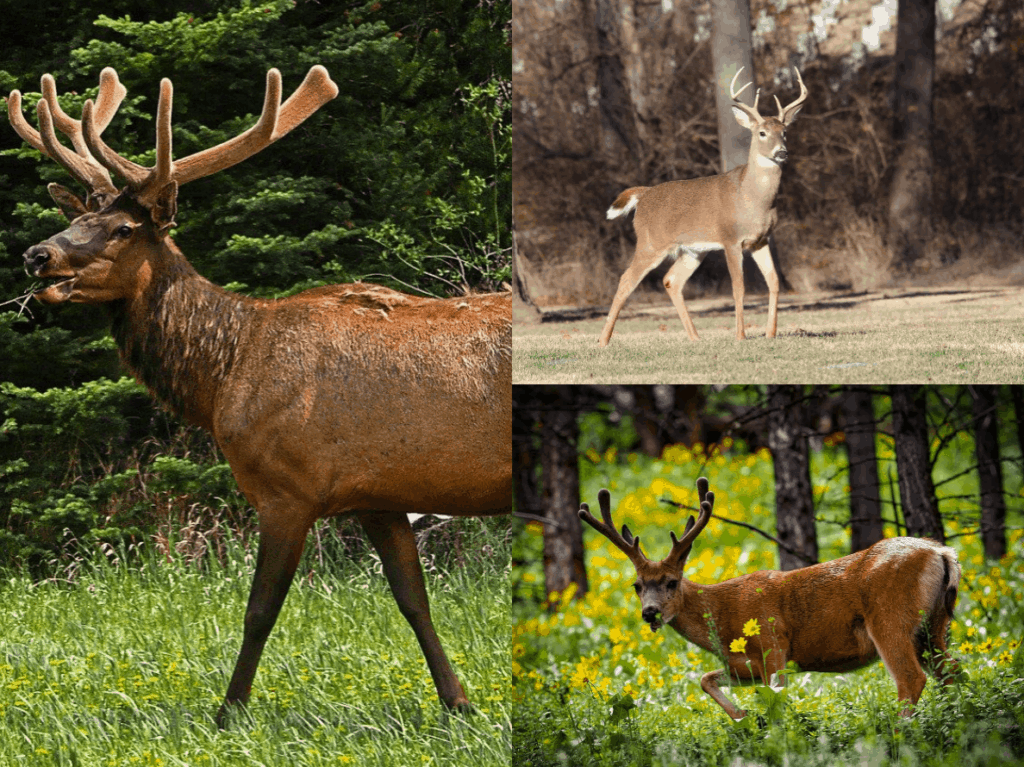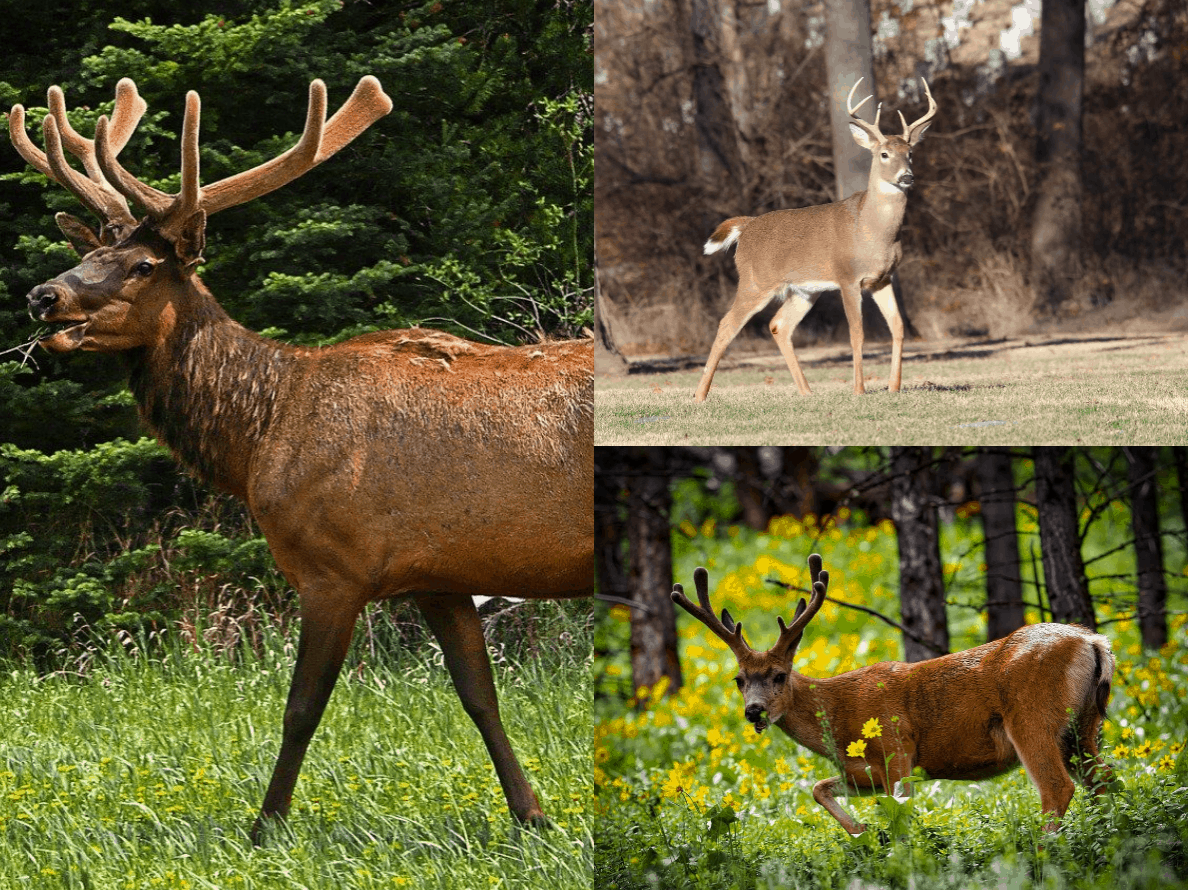
The Enigmatic Hybrid: Exploring the Possibility of a Deer and Elk Mix
The natural world is full of fascinating creatures and complex relationships. One question that often arises in discussions about wildlife is whether different species can interbreed and produce viable offspring. Specifically, the question of a mix from deer and elk often piques the interest of wildlife enthusiasts and biologists alike. This article delves into the biological realities, ecological considerations, and documented evidence surrounding the possibility of a deer and elk mix. We will explore the genetic compatibility, behavioral barriers, and potential consequences of such hybridization, providing a comprehensive overview of this intriguing topic.
Understanding Deer and Elk: A Comparative Overview
Before examining the possibility of a deer and elk mix, it’s crucial to understand the distinct characteristics of each species. Deer belong to the family Cervidae and encompass various species, including white-tailed deer (Odocoileus virginianus), mule deer (Odocoileus hemionus), and black-tailed deer (Odocoileus columbianus). Elk, also known as wapiti (Cervus canadensis), are significantly larger members of the same family. While they share a common ancestry, significant differences exist in their physical attributes, behaviors, and ecological niches.
Physical Distinctions
Elk are considerably larger than most deer species. An adult male elk, or bull, can weigh between 700 and 1,100 pounds and stand up to 5 feet tall at the shoulder. Deer, on the other hand, typically weigh between 100 and 300 pounds, depending on the species and geographic location. Elk also possess larger antlers, which are shed and regrown annually. The antlers of a mature bull elk can be incredibly impressive, boasting multiple points and spanning several feet. Coat color also differs; elk typically have a reddish-brown coat with a distinctive buff-colored rump patch, while deer coats vary widely depending on the species, ranging from reddish-brown to grayish-brown.
Behavioral Differences
Elk and deer exhibit distinct behavioral patterns, particularly during mating season, also known as the rut. Elk are known for their dramatic bugling calls, which bulls use to attract mates and assert dominance. Deer, while also engaging in mating rituals, tend to be quieter and more subtle in their courtship displays. Social structures also differ. Elk often form large herds, while deer tend to be more solitary or live in smaller family groups. These behavioral differences play a significant role in reproductive isolation, making interspecies mating less likely. [See also: Deer Mating Rituals]
Ecological Niches
While elk and deer can inhabit overlapping territories, they often occupy different ecological niches. Elk are typically found in more open habitats, such as grasslands, meadows, and edges of forests. Deer, particularly white-tailed deer, are more adaptable and can thrive in a wider range of environments, including dense forests, suburban areas, and agricultural lands. These differences in habitat preference further reduce the likelihood of interaction and potential hybridization between the two species. Understanding these distinctions is crucial when considering if a mix from deer and elk is even possible.
The Science of Hybridization: Genetic Compatibility and Barriers
Hybridization, the process of interbreeding between different species, is a complex phenomenon governed by genetic compatibility and reproductive barriers. For a deer and elk mix to occur, several hurdles must be overcome. The most significant is genetic compatibility. Different species possess distinct chromosome numbers and genetic structures. When gametes (sperm and egg) from different species combine, the resulting offspring may inherit an incompatible set of chromosomes, leading to developmental abnormalities or infertility.
Chromosome Number and Genetic Divergence
Deer and elk have different chromosome numbers. Deer typically have 70 chromosomes, while elk have 68. This difference in chromosome number can lead to problems during meiosis, the process of cell division that produces sperm and egg cells. The mismatched chromosomes may not pair correctly, resulting in gametes with an abnormal number of chromosomes. If such a gamete fertilizes another, the resulting embryo is likely to be non-viable. Even if a hybrid offspring is born, it may be infertile, preventing further propagation of the hybrid lineage. The genetic divergence between deer and elk, accumulated over millions of years of evolution, further complicates the possibility of successful hybridization. A deer and elk mix faces significant genetic challenges.
Reproductive Barriers
Beyond genetic incompatibility, several reproductive barriers prevent hybridization between deer and elk. These barriers can be prezygotic, preventing mating from occurring in the first place, or postzygotic, affecting the viability or fertility of hybrid offspring. Prezygotic barriers include differences in mating rituals, habitat preferences, and temporal isolation (different breeding seasons). As mentioned earlier, elk and deer have distinct mating behaviors and calls. These differences can prevent them from recognizing each other as potential mates. Postzygotic barriers include hybrid inviability (the hybrid offspring does not survive) and hybrid sterility (the hybrid offspring is infertile). Even if a deer and elk mix were to occur, the offspring would likely face significant challenges to survival and reproduction. [See also: Understanding Reproductive Isolation]
Documented Cases and Scientific Evidence
Despite the genetic and reproductive barriers, there have been occasional reports and anecdotal evidence suggesting the possibility of a deer and elk mix. However, these reports are often unsubstantiated and lack scientific validation. To date, there is no conclusive genetic evidence to support the existence of a viable, fertile hybrid offspring between deer and elk. While some individuals may exhibit characteristics that appear intermediate between the two species, these traits could be due to natural variation within the species or other environmental factors, rather than hybridization.
Analyzing Anecdotal Evidence
Many purported cases of a deer and elk mix are based on visual observations of animals with unusual physical traits. For instance, an animal might be larger than a typical deer but smaller than an elk, or it might possess antlers that are somewhat intermediate in size and shape. However, these observations are not sufficient to confirm hybridization. Without genetic analysis, it is impossible to determine whether such an animal is truly a hybrid or simply an atypical member of its own species. Furthermore, misidentification is common, especially in areas where deer and elk populations overlap. A young elk, for example, might be mistaken for a mix from deer and elk.
The Role of Genetic Testing
The only definitive way to confirm hybridization is through genetic testing. DNA analysis can reveal whether an individual possesses genetic markers from both deer and elk. This involves comparing the DNA of the suspected hybrid to known samples from both parental species. If the hybrid is indeed a product of interbreeding, its DNA will show a combination of genetic material from both deer and elk. To date, no such genetic evidence has been found to support the existence of a viable deer and elk mix. While the possibility remains intriguing, the scientific evidence strongly suggests that hybridization between these two species is extremely rare, if it occurs at all.
Ecological Implications and Conservation Concerns
The potential for hybridization between deer and elk raises important ecological and conservation concerns. If a deer and elk mix were to become more common, it could lead to several negative consequences, including the loss of genetic purity of the parental species, the introduction of new diseases or parasites, and the disruption of ecological interactions. Hybridization can blur the distinct characteristics of different species, making them more difficult to identify and manage. This can complicate conservation efforts, particularly for species that are already threatened or endangered. A mix from deer and elk could disrupt established ecological balance.
Genetic Introgression and Loss of Diversity
One of the primary concerns associated with hybridization is genetic introgression, the gradual infiltration of genes from one species into the gene pool of another. This can lead to the loss of unique genetic adaptations that have evolved over time, making the species less resilient to environmental changes and disease. In the case of a deer and elk mix, if hybrids were to successfully reproduce and backcross with either deer or elk, the genetic integrity of both species could be compromised. This could have long-term consequences for their survival and adaptability.
Disease Transmission and Ecological Disruption
Hybridization can also facilitate the transmission of diseases and parasites between species. If a deer and elk mix were to occur, the hybrid offspring could act as a bridge for pathogens to move between deer and elk populations. This could lead to outbreaks of new diseases or the spread of existing diseases to new areas. Furthermore, hybridization can disrupt ecological interactions by altering the behavior and resource use of the parental species. Hybrids may compete with their parents for food and habitat, potentially leading to declines in the populations of one or both species.
Conclusion: The Rarity and Challenges of a Deer and Elk Mix
In conclusion, while the idea of a deer and elk mix is intriguing, the scientific evidence suggests that it is exceedingly rare, if not impossible. The genetic incompatibility, reproductive barriers, and ecological differences between deer and elk make successful hybridization highly unlikely. Although anecdotal reports and visual observations may suggest otherwise, these cases lack conclusive genetic validation. Furthermore, the potential ecological and conservation consequences of hybridization highlight the importance of maintaining the genetic integrity of both deer and elk populations. Continued research and monitoring are essential to understand the complex interactions between these species and to ensure their long-term survival. The concept of a mix from deer and elk remains a topic of speculation, but the biological realities point towards a distinct separation between these two magnificent creatures. [See also: Elk Conservation Efforts]

